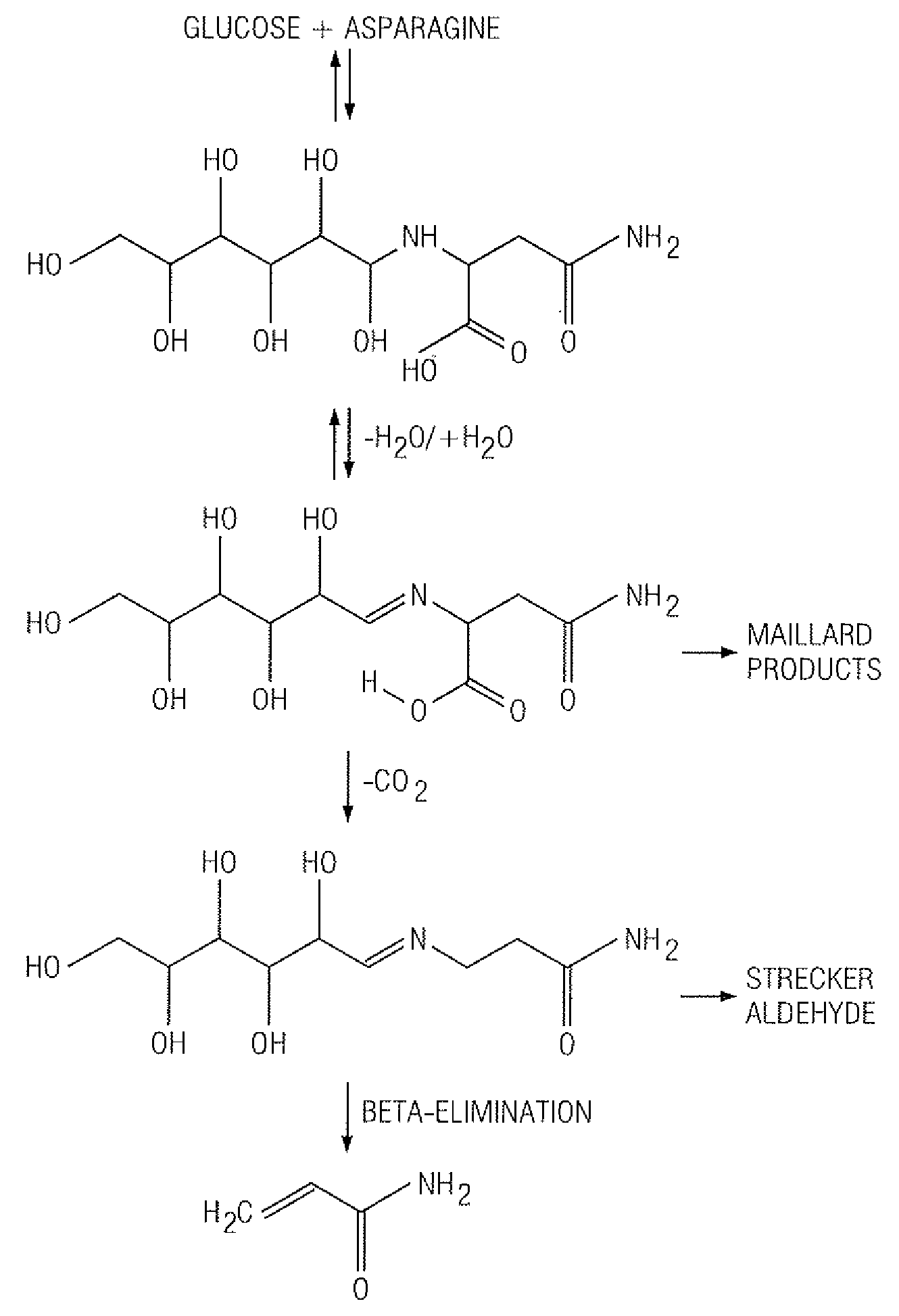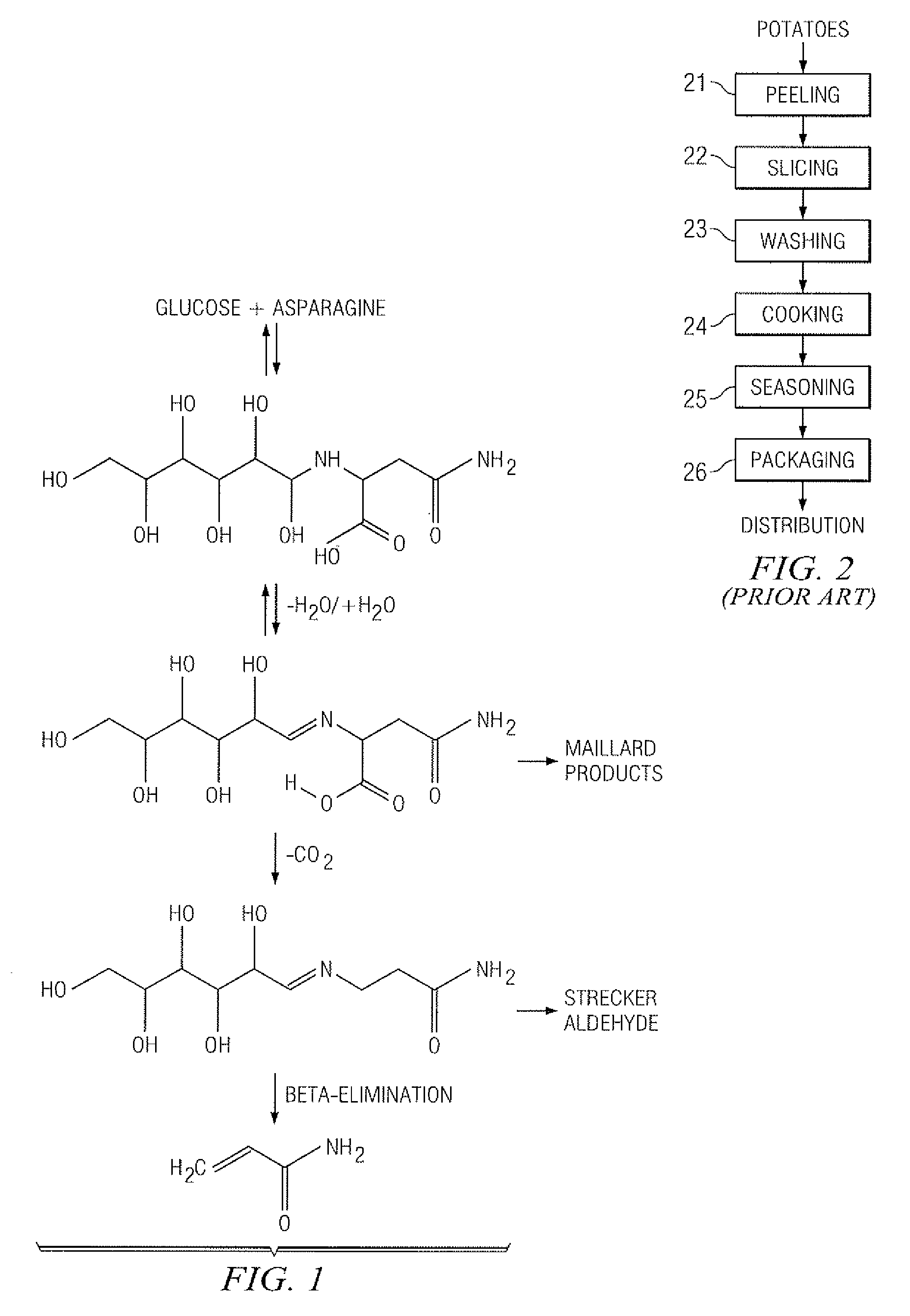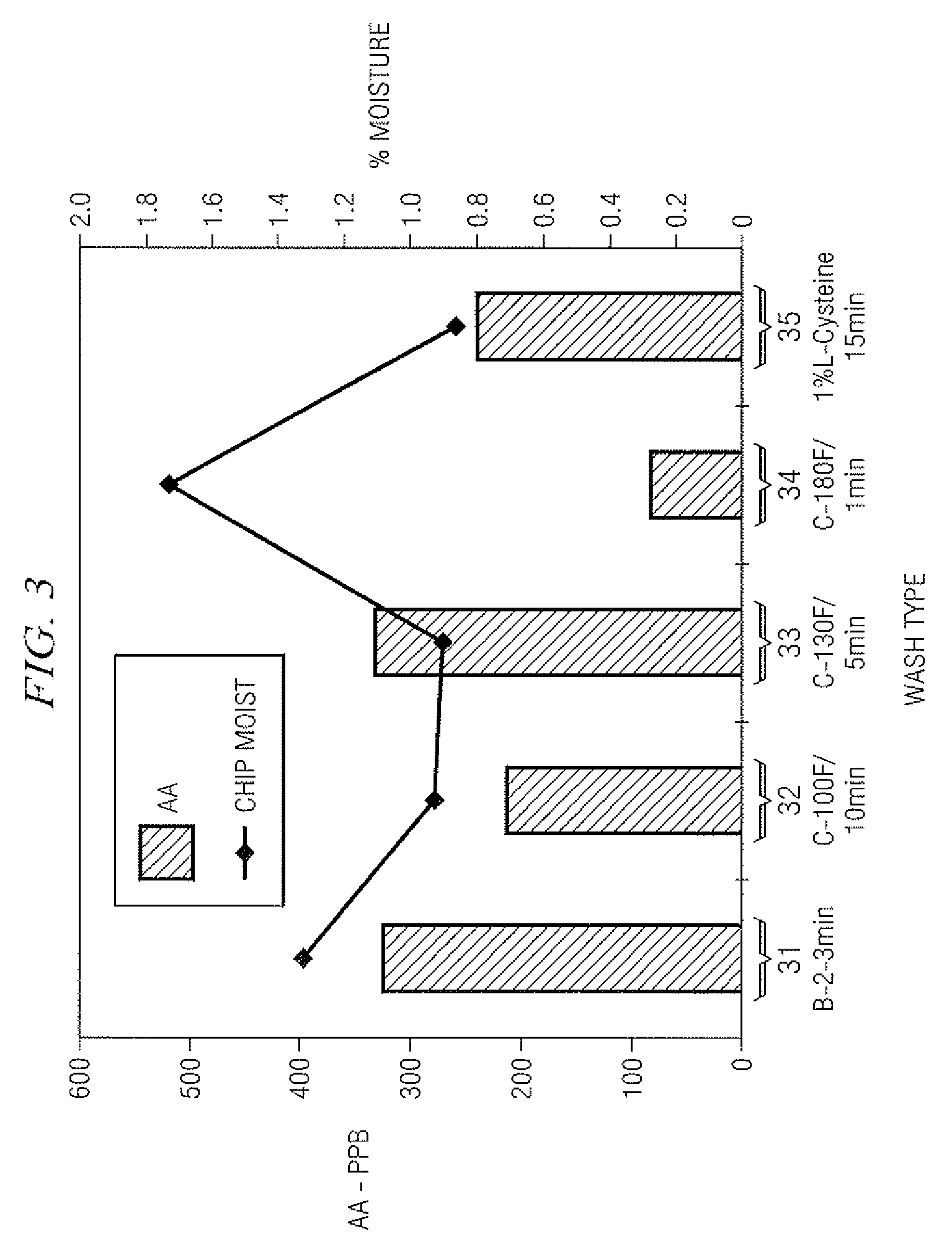Method for Reducing Acrylamide Formation in Thermally Processed Foods
a technology of thermal processing and acrylamide, which is applied in the field of reducing acrylamide formation in thermal processing foods, can solve the problems of unconfirmed to any degree of certainty, difficult to confirm findings, and undesirable effects, and achieve the effect of reducing the amount of asparagin
- Summary
- Abstract
- Description
- Claims
- Application Information
AI Technical Summary
Benefits of technology
Problems solved by technology
Method used
Image
Examples
example
[0047] The reduction of acrylamide formation when asparagine and glucose are heated in the presence of the enzyme asparaginase is demonstrated in this example. The enzyme asparaginase was dissolved in about 0.05 M Tris-hydrochloric acid buffer at pH 8.6 to make an active asparaginase solution. A control asparaginase solution was also made by heating a portion of the active asparaginase solution at about 100° C. for about 20 minutes to deactivate the enzyme. In the control, about 0.2 grams glucose, about 0.1 gram asparagine and about 20 mils of the heated asparaginase solution were combined in a 20-ml headspace vial. In the active enzyme experiment, about 0.2 grams of glucose, about 0.1 grams asparagine and about 20 mils of active asparaginase solution were combined in a 20-ml headspace vial. The amount of enzyme in the vial was about 250 enzyme units. The control and active enzyme mixtures were processed together in duplicate. The vials were kept at about 37° C. for about 2 hours, t...
PUM
 Login to View More
Login to View More Abstract
Description
Claims
Application Information
 Login to View More
Login to View More - R&D
- Intellectual Property
- Life Sciences
- Materials
- Tech Scout
- Unparalleled Data Quality
- Higher Quality Content
- 60% Fewer Hallucinations
Browse by: Latest US Patents, China's latest patents, Technical Efficacy Thesaurus, Application Domain, Technology Topic, Popular Technical Reports.
© 2025 PatSnap. All rights reserved.Legal|Privacy policy|Modern Slavery Act Transparency Statement|Sitemap|About US| Contact US: help@patsnap.com



